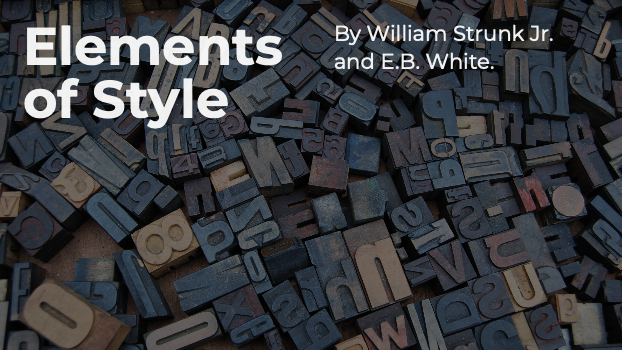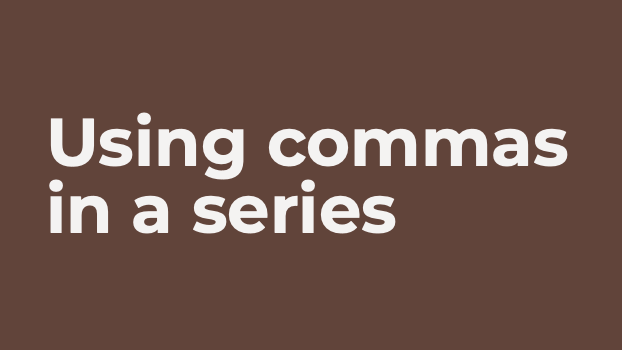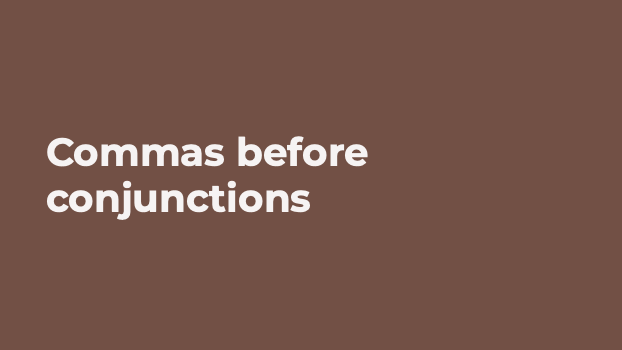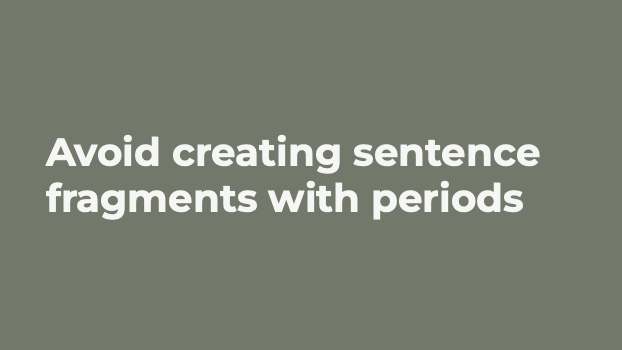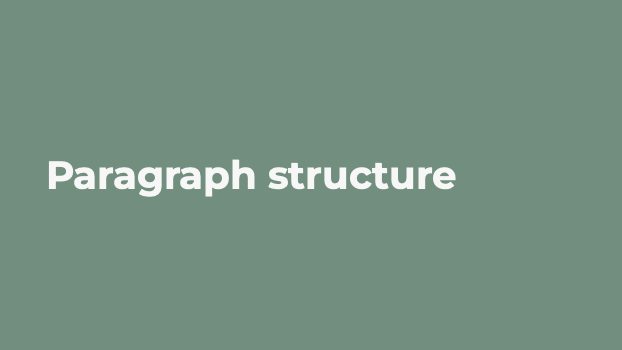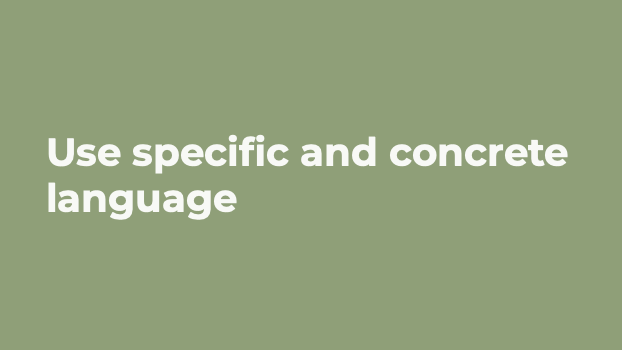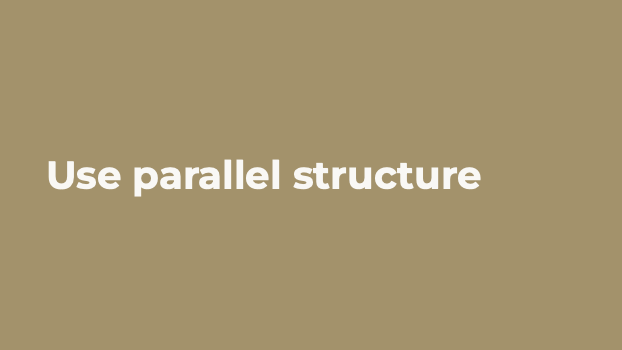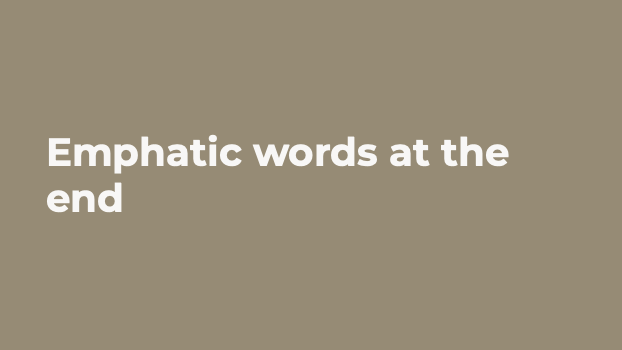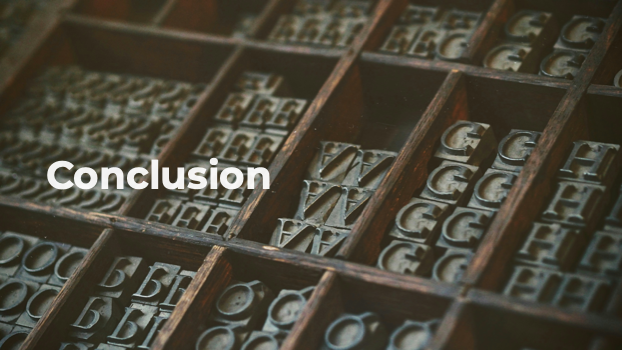Elements of Style
By William Strunk Jr. and E.B. White.
This presentation summarizes essential writing principles described in Elements of Style, that can help improve clarity, precision, and readability in your writing.
Forming possessives
Form the possessive singular of nouns by adding 's, even if the final consonant is “s” — for example, Charles’s friend, Burns’s poems).
Exceptions include ancient proper names such as Achilles’ heel, Jesus’ teachings, and phrases like for conscience’ sake.
Using commas in a series
In a series of three or more terms with a single conjunction, use a comma after each term except the last. For example: ’He opened the letter, read it, and made a note of its contents.’
Parenthetic expressions
Enclose parenthetic expressions with commas. Example: ’The best way to see a country, unless you are pressed for time, is to travel on foot.’
If a parenthetic expression is preceded by a conjunction, place the comma before the conjunction, not after it: ’He saw us coming, and unaware that we had learned of his treachery, greeted us with a smile.’
Commas before conjunctions
A comma should precede a conjunction that introduces an independent clause. Example: ’The situation is perilous, but there is still one chance of escape.’ Avoid excessive comma use — only use it when necessary for clarity.
Semicolons between independent clauses
Use semicolons to join closely related independent clauses. Example: ’It is nearly half past five; we cannot reach town before dark.’
Avoid creating sentence fragments with periods
A complete sentence requires a subject and a verb. Example of a fragment: ’Coming home from Liverpool to New York.’ To correct it: ’I met them on a Cunard liner several years ago, coming home from Liverpool to New York.’
Paragraph structure
Each paragraph should focus on a single topic. For example, a short review of a book might consist of a single paragraph, while a more detailed report may need several paragraphs, each dedicated to a specific aspect.
Use active voice
The active voice is more direct than the passive. Example: I shall always remember my first visit to Boston. Compare that to: My first visit to Boston will always be remembered by me.
Be concise
Vigorous writing is concise. A sentence should contain no unnecessary words, a paragraph no unnecessary sentences, for the same reason that a drawing should have no unnecessary lines and a machine no unnecessary parts.
Use positive language
Say things positively. Instead of ’He was not very often on time’, say ’He usually came late.’ A positive statement is more concise and impactful than a weak negative.
Use specific and concrete language
Specific is better than general. Example: ’He grinned as he pocketed the coin’ is more vivid than ’He showed satisfaction as he took possession of his well-earned reward.’
Avoid wordiness
Remove redundant words. Example: ’There is no doubt that’ should be rewritten as ’Doubtless’. Similarly, ’Used for fuel purposes’ can be shortened to ’Used for fuel’.
Avoid loose sentences
Loose sentences consist of multiple clauses linked by conjunctions. Example: ’The third concert of the subscription series was given last evening, and a large audience was in attendance.’ Instead, break it into separate sentences.
Use parallel structure
Keep related ideas in similar grammatical form. Example: ’Formerly, science was taught by the textbook method, while now the laboratory method is employed.’ should be rewritten as ’Formerly, science was taught by the textbook method; now it is taught by the laboratory method.’
Keep related words together
Words that modify a sentence should be placed next to the words they modify. Example: ’He only found two mistakes.’ should be rewritten as ’He found only two mistakes.’
Emphatic words at the end
The most important element of a sentence should come at the end. Example: ’Because of its hardness, this steel is principally used in making razors.’ emphasizes the reason better than ’This steel is principally used for making razors, because of its hardness.’
Formatting
Use consistent formatting. Italicize book titles (The Iliad). Use figures for dates (August 9, 1918). Avoid spelling out numbers unless necessary.
Conclusion
Good writing depends on clarity, brevity, and consistency. Read the full Elements of Style to further improve your writing.
